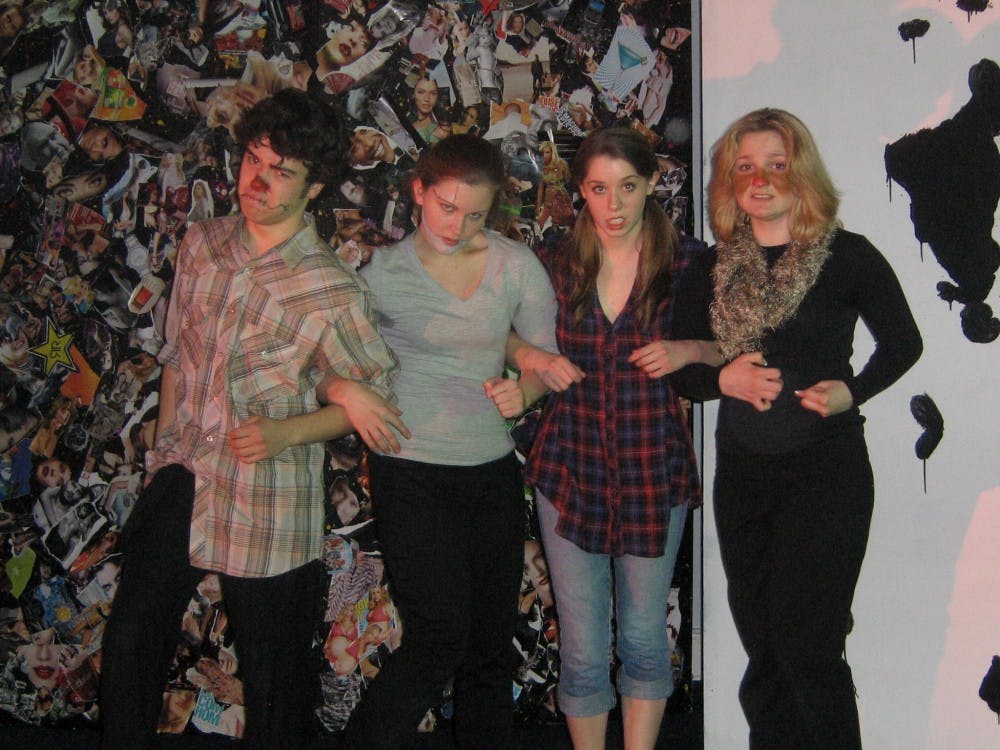The British playwright Sarah Kane was only 28 years old when she decided to take her own life after a lasting bout with clinical depression. In a final utterance to a seemingly uncaring world, she channeled all of her frustrations into the wildly unnerving "4.48 Psychosis," a caustic work that many critics view as her extended suicide note. The play has undergone a wide variety of iterations in its posthumous tribute to an especially troubled soul.
A single word to describe the recent adaptation of the piece by the AU Players is jarring. Director Caroline Mahoney wanted to add an element of familiarity to the antihero, so she incorporated the cast of "The Wizard of Oz."
In this disturbing display of unlikely characterization, Dorothy (played by Kate Nolen) is on her final dregs of mental stability, a far cry from the innocent, rosy-cheeked girl looking for Kansas. She is supported — and that word is used loosely — by a jittery scarecrow (David Landstrom), a devious lion (Brittany Clark) and an apathetic tin man (Elizabeth Salamon) — each representing an extreme emotional persona, given flesh through Dorothy's madness.
The play is told in split segments of heavy, impassioned monologues by Dorothy and therapy sessions by a worrisome, if not reticent, doctor. This doctor is said to represent The Wizard, a man whose authoritative and bookish nature precedes him in the eyes of Dorothy, making her crave his comfort while she is unflinching to the idea that he is just as human as everybody else. The doctor's intentions are somewhat muddled in that one doesn't know if he genuinely feels for Dorothy's plight or is simply doing his job.
Mahoney makes the play a real treat with her use of dialogue, some of which may seem off-center at first to a skeptical few, but will gradually build up to become progressively haunting and eerie. There's a definite poetic rhythm — terse but profound — that is only bolstered with Nolen's pitch-perfect ability to convey snapshot emotions. This is juxtaposed with the shivering scarecrow, the tin man with the blank stare and the sneering lion, all of which never once detract from analyzing Dorothy's psyche.
As we start to see different sides of Dorothy, we develop a kind of gluttonously sick enjoyment in her misery. Through the constant interjections by the scarecrow, tin man and lion, the mania is personified and hard to maintain as Dorothy herself has trouble maintaining her own emotions. Peeling away the depths of anguish with each new act, some of us can barely grasp what it is she's looking for and why she's so insecure. Then, all at once, for a split second, we understand her self-destructive tendencies and her inescapable grief — we are in communion and our feelings of empathetic sorrow are punctuated by relief.
Dorothy's proverbial yellow brick road is her ascent to sanity or her plummet to dementia, depending on how you look at it. The play builds up such a steady rhythm that it almost feels likes a daydream or an old memory when it's over. While it offers little in terms of direct comfort for those who can relate, it shows that people like Dorothy aren't suffering alone. When all inner hope for self-betterment becomes as empty as a bottle of pills, there's a cry for help that falls on deaf ears, and this play conveys just that. If nothing else, it's a very human production.
You can reach this writer at thescene@theeagleonline.com.





